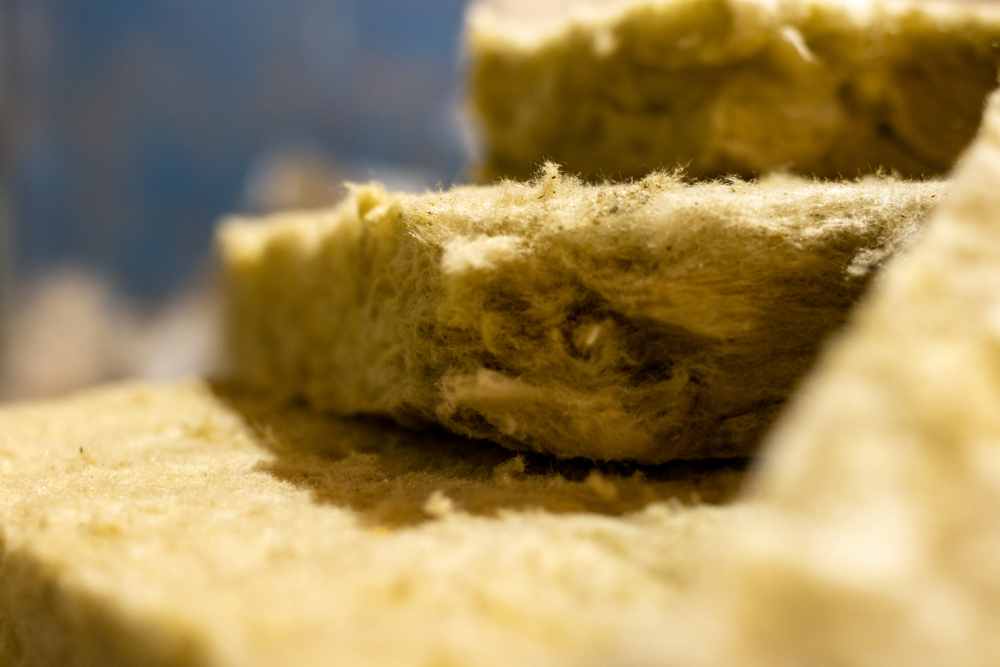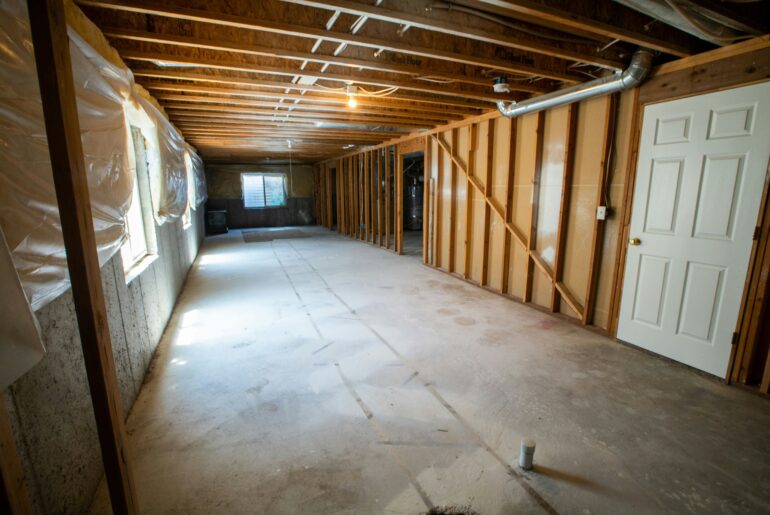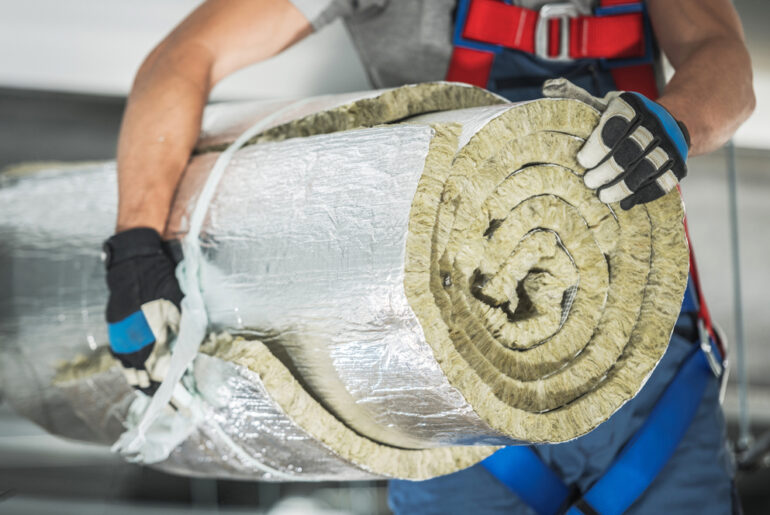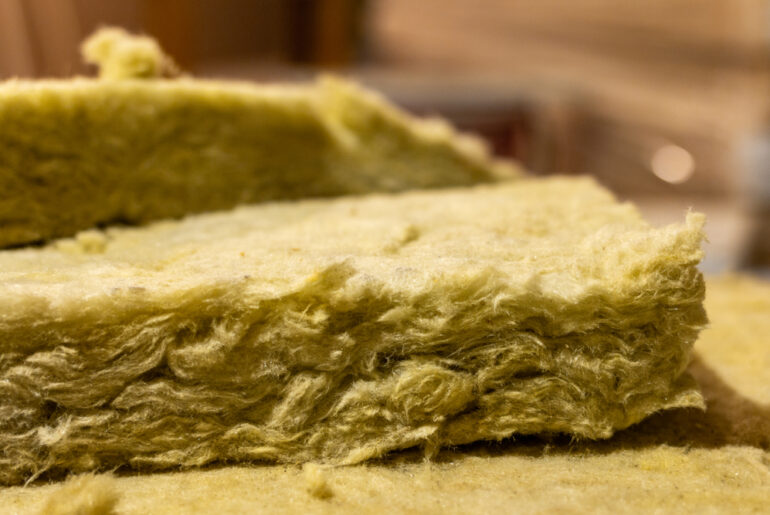Cellulose insulation is often cited as being one of the greenest products we can use to insulate our homes and businesses, but as with all investments we need to know whether it will pay off in the long term.
The R-value of cellulose insulation can range between 3.5 and 3.8. This variation is created by several factors, the main ones being the method of installation, and the potential for settlement over time. Compression and pest activity can also have an effect, as can the local climate.
So, how can you be sure that cellulose insulation is right for your project?
Let’s take a quick look at the competition:
For a typical attic floor installation, you will likely be looking at R-60 in most climate zones. From the chart below, both cellulose and fiberglass require a significant depth of material to achieve this. But even open-cell spray foam requires a similar depth to hit the mark.
| Insulation | R-value per inch | R-value per inch over time | Thickness req for R-60 with allowance for age/settlement |
| Cellulose Fiber | 3.8 | 3.5 | 17.5” |
| Fiberglass Batt | 3.7 | 3.5 | 17.5” |
| Open Cell Spray Foam | 3.6 | 3.6 | 16.6” |
| Closed Cell Spray Foam | 6 | 6 | 10” |
| Foam Board | 6.8 | 5.5 | 11” |
The advantage of cellulose is, of course, cost. While it is less expensive than all but the fiberglass insulation it does have other advantages that could make it the better choice.
Fiberglass has a greater air permeability than cellulose, which means that if your home is in climate zones 5 through 8, where the winters are harder, and the wind chill factor is greater, then it could lose up to 50% of its effective R-value.
In the same conditions, cellulose has demonstrated much better resistance, with its R-value falling by only 10 to 15%.
Types of Cellulose and Their R-Values
The type of cellulose that you have installed will also have an effect on how well it can be expected to perform.
Loose Fill
Loose-fill cellulose insulation is normally blown into the loft or attic. Soffit baffles are fitted around the edge of the attic adjacent to the rafters to maintain proper ventilation of the structure, then level gauges will be set up in view of the attic access so the depth can be recorded and monitored over time.
Bags of cellulose can be bought from Lowes or Home Depot, where you can also rent the equipment to carry out the installation yourself if you don’t have the means to engage a contractor.
Loose-fill cellulose will settle over time, so it is sensible to overfill the attic by the level recommended on the chart found on the side of the bag.
Compressing cellulose insulation will reduce the R-value, so if you were using the loft for storage, it’s probably a good idea to have a clear-out and find alternative storage.
These days it is treated with anti-mold, fire retardants, and pest-repelling substances, so it should stay good for some time to come.
If you already have a level of insulation in the attic space, cellulose is perfect for topping up over older fiberglass, or wood fiber installations.
Dense Packed
Dense-packed cellulose is a little more specialist, and most people prefer to call in professionals. However, it’s not beyond the confident DIY enthusiast, and the equipment can be hired from most big-box homestores.
It must be solidly packed in at 3.5-3.8 lbs per cubic foot to achieve the maximum 3.8 R-value so that in a four-inch cavity wall you can achieve an average R-value of 15. In most zones, 15 will fall short, while a six-inch stud wall will only get you to R-20.
Be prepared to add insulated sheathing, most likely a foam board, before refitting the siding.
Spray Applied Cellulose (Wet Spray)
Spray-applied cellulose is a messy way to insulate, but it does do a great job of keeping down noise and keeping the temperature at the right level within the home. Sprayed directly into the exterior wall framing, it is best when installed in new buildings or extensions.
The water and adhesive mixture ensures a higher-performance air seal than dense-packed cellulose or fiberglass batts. Although it is called ‘wet spray’, the acrylic adhesives used do not mean that there is any great amount of moisture involved, and so there are no lengthy drying times to have to think about.
Stabilized Cellulose
This stuff is next-level cellulose insulation with an added acrylic adhesive that is designed to minimize dust during application. Used in the attic space, it means that it is less likely to settle, meaning it will retain its optimum R-value performance for longer than the standard material.
It is recommended that if you are self-installing you wear the personal protective equipment as recommended by the manufacturers as there will never be zero particles in the air. It may look dust-free, but it is always worth protecting your respiratory tract.
Low Dust Cellulose
Low dust cellulose is basically another industry description for the aforementioned stabilized product but with an allowance for the addition of a small amount of water as well as the adhesive. The technique does minimize dust and makes installation much cleaner, and more visible in that installers say they are less likely to miss areas because they can see what they are doing.
What Can Increase R-Value of Cellulose Insulation?
Factor 1:
Dense packing of cellulose without crushing can increase the R-value of the insulation. However, there is a limit of 4 lbs per cubic foot before the material begins to become compressed within a wall cavity.
Factor 2:
A competent air seal around the building envelope that inhibits airflow from the outside in colder climate zones can help maintain an R-value when you need it most.
What Can Decrease R-Value of Cellulose Insulation?
Factor 1:
Once an attic space has been insulated with loose blown cellulose insulation then the best advice is to only ever enter the space for maintenance and inspection. Walking on the insulation with compress it and it will immediately become less effective.
Factor 2:
Attic insulation is a difficult job and ensuring that all parts have been effectively covered to the correct depth is not easy. If you have any reservations, it is always a good idea to get an experienced contractor who can guarantee the correct coverage across the attic.
Factor 3:
Time will lower your attic insulation R-value and there will come a day, probably in three decades or so, when you will need to top up the level of insulation.
Factor 4:
Pest or fire damage will affect the performance of your insulation. Cellulose fiber is normally treated with borate to inhibit the spread of fire, and with pest repellents too, but both will have an effect.
Factor 5:
If there is a water leak, then that too will cause problems. While cellulose fiber will dry out it won’t be an effective insulator while it is wet, and if the leak is a big one, then the affected area will likely have to be replaced.
This is all to say that your attic should be in good shape before you commit to insulating it.
Check all of the services that run through the space, seal off any areas where pests could enter, and check the roof for leaks.
How Cellulose R-value Compares to Other Insulation Types?
Cellulose holds up well in the R-value rankings with similar figures to fiberglass and even open-cell spray foam. It only really loses out to the higher density foam boards such as polyiso or Styrofoam.
Its green credentials are often put forward as a positive reason to use cellulose. Indeed, most cellulose insulation products are up to 85% recycled newspaper.
CIMA, the body that represents cellulose manufacturers in the US claims that up to 38% of landfill could be avoided if all paper waste was diverted to recycling and the manufacture of insulation and other products.





